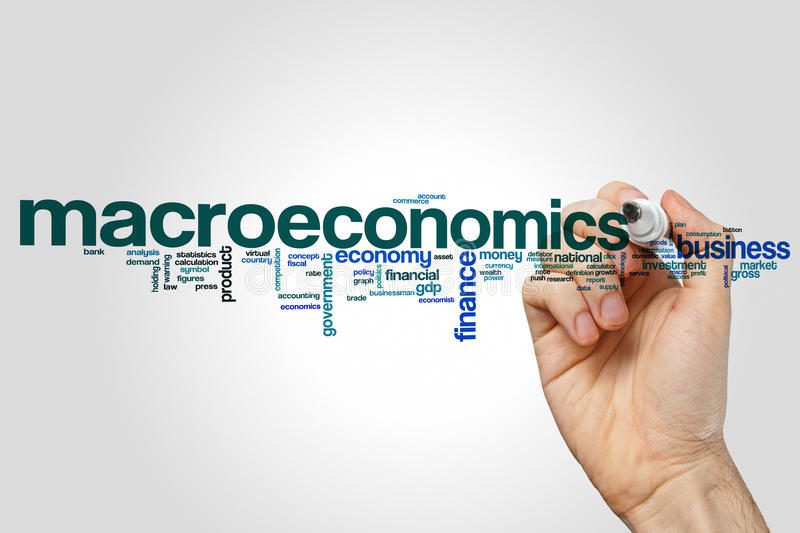Macro and microeconomics are two branches of economics that study different aspects of the economy.
Microeconomics is the study of how individual consumers, firms, and industries make decisions and interact with each other in a market economy. It focuses on the behavior of individuals and small economic units, such as households, firms, and industries. Microeconomics studies topics such as the supply and demand for goods and services, production costs, market structures, and how markets allocate resources.
Macroeconomics, on the other hand, is the study of the economy as a whole. It examines the performance and behavior of the economy on a larger scale, such as the national or global level. Macroeconomics studies topics such as economic growth, inflation, unemployment, fiscal and monetary policy, international trade, and the overall level of output and income in the economy.
In summary, microeconomics focuses on the behavior and decision-making of individual economic units, while macroeconomics studies the behavior and performance of the economy as a whole.
Microeconomics
Microeconomics is a branch of economics that studies the behavior and decision-making of individual consumers, firms, and industries in a market economy. It is concerned with the way these agents interact with each other and how they allocate scarce resources to satisfy their needs and wants.

Microeconomics is based on the assumption that individuals act rationally to maximize their own self-interest. This means that they make choices based on the costs and benefits of each alternative and try to get the most value for their money. Microeconomics examines the different factors that influence these choices, such as price, income, preferences, and market conditions.
Microeconomics is also concerned with market structures and how they affect the behavior of firms and consumers. It studies the different types of markets, such as perfect competition, monopolistic competition, oligopoly, and monopoly, and how they allocate resources and affect prices.
Some of the topics that microeconomics covers include:
- Supply and demand: the forces that determine the prices and quantities of goods and services in the market.
- Production and costs: how firms produce goods and services, the different types of costs they incur, and how they maximize profits.
- Consumer behavior: how consumers make choices based on their preferences and budget constraints.
- Market structures: the different types of markets and how they affect prices, competition, and consumer welfare.
- Factor markets: the markets for labor, capital, and land, and how they determine the prices and quantities of these factors.
Overall, microeconomics provides a framework for analyzing and understanding the behavior of individual economic agents in a market economy, and how they interact with each other to allocate resources efficiently.
Macroeconomics
Macroeconomics is a branch of economics that studies the behavior and performance of the economy as a whole, rather than individual markets and economic agents. It is concerned with the aggregate or total economic variables, such as the level of output, income, employment, and prices.

Macroeconomics examines the factors that determine the overall level of economic activity and how it fluctuates over time. It also looks at how government policies, such as fiscal and monetary policies, affect the economy.
Some of the topics that macroeconomics covers include:
- Economic growth: how the economy increases its output and productivity over time.
- Business cycles: the fluctuations in economic activity over time, including expansions and contractions.
- Inflation: the rate at which the general level of prices for goods and services is increasing.
- Unemployment: the number of people who are out of work and seeking employment.
- Monetary policy: the use of monetary tools, such as interest rates and money supply, to regulate the economy.
- Fiscal policy: the use of government spending and taxation to influence the economy.
Macroeconomics is important for understanding the overall health and stability of the economy, as well as the impact of government policies on the economy. By analyzing macroeconomic variables, economists can make predictions about future economic trends and inform policy decisions that aim to improve economic performance and stability.
Similarities of macro and microeconomics
Although macro and microeconomics are different branches of economics, they share some similarities:
- Both macro and microeconomics are concerned with the allocation of scarce resources. While microeconomics examines how individuals and firms allocate resources to satisfy their needs and wants, macroeconomics looks at how the economy as a whole allocates resources to achieve its goals.
- Both microeconomics and macroeconomics rely on the same set of tools and methods, such as mathematical modeling, statistical analysis, and empirical research. They both use economic theories and models to understand and explain economic phenomena.
- Both microeconomics and macroeconomics are interrelated. Changes in the macroeconomic environment can affect the behavior of individual agents and markets, while changes in individual markets and agents can affect the overall performance of the economy.
- Both microeconomics and macroeconomics are used to inform policy decisions. Microeconomics is used to inform policies that affect individual markets and economic agents, while macroeconomics is used to inform policies that affect the economy as a whole.
In summary, while macroeconomics and microeconomics are different in their focus and scope, they share some similarities in their methods, tools, interrelatedness, and policy relevance.
which is most important topic for upsc macro and microeconomics
Both microeconomics and macroeconomics are important topics for UPSC (Union Public Service Commission) as they are part of the syllabus for the Economics optional paper. However, the weightage given to each topic may vary from year to year.
In general, the UPSC Economics optional paper gives equal importance to both microeconomics and macroeconomics. Therefore, it is important for candidates to have a strong understanding of both topics to perform well in the exam.
Candidates should also be aware that questions in the exam may be interrelated, with a macroeconomic topic being linked to a microeconomic topic. Therefore, having a good grasp of both topics is essential to answer such questions.
In summary, while the importance of microeconomics and macroeconomics may vary from year to year, it is important for UPSC candidates to have a strong understanding of both topics to perform well in the Economics optional paper.
micro and macro economics importane for upsc prilims or not
Microeconomics and macroeconomics are not directly included in the syllabus for the UPSC Prelims exam. The Prelims exam consists of two objective-type papers – General Studies Paper I and General Studies Paper II (CSAT). The focus of these papers is on general knowledge and aptitude skills.
However, having a basic understanding of microeconomics and macroeconomics may be helpful in answering some questions in the Prelims exam, especially in the General Studies Paper III, which covers topics related to the Indian economy.
For example, questions related to inflation, economic growth, and fiscal and monetary policies may require an understanding of macroeconomic concepts. Similarly, questions related to market structures, consumer behavior, and production costs may require an understanding of microeconomic concepts.
Therefore, while microeconomics and macroeconomics are not directly included in the UPSC Prelims syllabus, having a basic understanding of these concepts can help in answering certain questions in the exam. However, candidates should focus primarily on the topics mentioned in the syllabus to maximize their chances of success in the exam.
some questions of macro and microeconomics
Sure, here are some sample questions from microeconomics and macroeconomics:
Microeconomics:
- What is the difference between a normal good and an inferior good? Provide an example of each.
- How does the law of diminishing marginal utility apply to consumer behavior?
- What is the difference between a monopoly and a monopolistic competition? Provide an example of each.
Macroeconomics:
- What is GDP (Gross Domestic Product) and how is it measured? What are some limitations of using GDP as a measure of economic well-being?
- What is the Phillips curve and how does it illustrate the trade-off between inflation and unemployment?
- What is the difference between monetary policy and fiscal policy? Provide an example of each.
These are just a few sample questions to give you an idea of the types of questions that can be asked in microeconomics and macroeconomics. The actual questions in exams may vary in terms of complexity and format. It is important to have a solid understanding of the key concepts and theories in both microeconomics and macroeconomics to answer questions effectively.
| Official website | upsc.gov.in |
| Home page | indianstudent.in |

1 thought on “differentiate between macro and microeconomics”